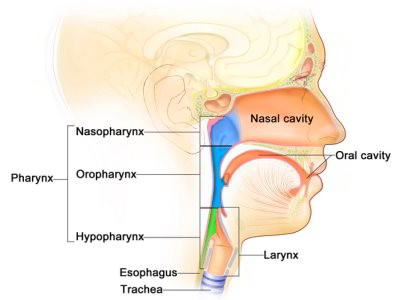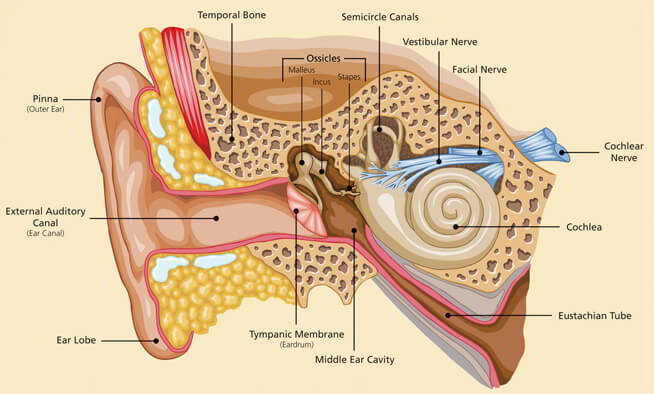The ears are responsible for two different senses: hearing and balance. The ear consists of the outer, middle and inner ear. The visible outer part of the ear is called the pinna, and the opening into the middle ear is called the ear canal. At the end of the ear canal is the eardrum, which vibrates in response to sound waves.
Sound waves are transmitted along the path of the blue arrows and are transmitted to the brain as electrical signals.
Beyond the eardrum is the middle ear, which contains the ossicles, three tiny bones that transmit vibration from the eardrum to a membrane known as the oval window. Beyond this
The eustachian tube connects the middle ear to the back of the nose and throat and allows equal air pressure to be maintained on both sides of the eardrum. The nose consists of the visible outer structure, the nostrils and the inner nasal cavity, which warms and moistens air that is breathed in.
The nose and throat are closely linked. The epiglottis closes downwards during eating to prevent food from entering the trachea.
At the bottom of the throat is the voice box (larynx), the structure that contains the vocal cords and allows speech to be produced.Within the skull bones around the nose and eyes are the sinuses, cavities that have little use 
The ears, nose and throat are interconnected. The eustachian tube maintains equal air pressure on both sides of the eardrum.


 (56 votes, average: 4.59 out of 5)
(56 votes, average: 4.59 out of 5)